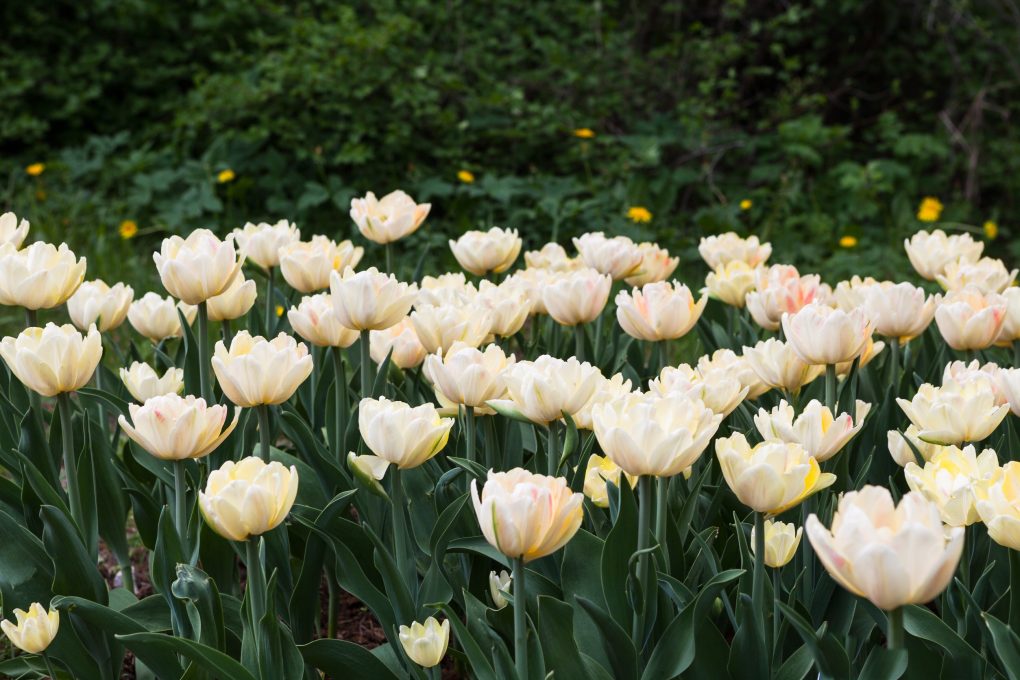Are Tulip Trees a Type of Magnolia: Exploring the Relationship Between Two Popular Tree Species
No, tulip trees (Liriodendron tulipifera) are not a type of magnolia. Although they share some similarities, they belong to different plant families. Tulip trees belong to the family Magnoliaceae, while magnolias belong to the family Magnoliaceae. However, they are distinct genera within that family. Tulip trees are part of the Liriodendron genus, while magnolias are part of the Magnolia genus.

Table of Contents
Differences Between Tulip Trees and Magnolias
Tulip trees and magnolias are often confused with one another, but they are two different tree species. This section will explore the differences between these two tree species.
- Leaves: One of the main differences between tulip trees and magnolias is their leaves. Tulip tree leaves are bright green and shaped like a tulip, while magnolia leaves are dark green and oval-shaped.
- Flowers: Tulip tree flowers are yellow-green with hints of orange and shaped like a tulip. Magnolia flowers, however, are large and waxy with a lemon citronella-like odor. They can be white, pink, red, purple, or golden yellow.
- Color: Tulip tree flowers are yellow-green with hints of orange. White magnolia flowers can be white, pink, red, purple, or golden yellow.
- Size: Tulip trees are enormous, up to 150 feet tall, while magnolias can grow up to 120 feet tall.
- Bloom: Tulip trees and magnolias generally bloom at the same time, but their flowers look different from one another.
- Height: Tulip trees are taller than magnolias, with an average height of 150 feet. However, Magnolias have an average height between 60-80 feet, according to the United States Department of Agriculture.
Similarities Between Tulip Trees and Magnolias
Tulip trees and magnolias share several similarities. Both are deciduous trees that bloom in spring, making them popular ornamental trees in gardens and parks. They are also known for their fragrant flowers that add a pleasant aroma to the environment.
Both tulip trees and magnolias prefer full sun to partial shade and can grow in various soil types. They are also known as shade trees, providing a cool and comfortable spot during hot summer days.
In terms of appearance, both trees have large, showy flowers that are attractive to bees and other pollinators. Tulip trees have yellow-green flowers with hints of orange, while magnolias have pink, purple, or white flowers. Both trees have green and glossy leaves, with tulip tree leaves having a unique tulip-shaped appearance.
Planting and Growing Tulip Trees and Magnolias

Tulip trees and magnolias are stunning trees that can enhance the beauty of any landscape. They are quite simple to cultivate and maintain, but it’s crucial to consider a few key factors when planting and nurturing them.
Location and Soil
Both tulip trees and magnolias prefer moist, well-drained soil that is slightly acidic. They can flourish in various soil types, including clay and sandy soil, but they do best in loamy soil rich in organic matter. If your soil is excessively sandy or heavy, you can increase its texture and fertility by amending it with compost, peat moss, or wood chips.
It’s also important to consider the location when planting tulip trees and magnolias. They like full sun to mild shade and must be planted in a well-ventilated environment. They are cold-hardy and can grow in a wide range of hardiness zones, but they may need to do better in areas with extremely hot summers or harsh winters.
Planting and Care
When planting tulip trees and magnolias, giving them plenty of space to grow is important. They can be planted as saplings or larger trees, but they should be spaced at least 15-20 feet apart to allow for proper growth and development.
Tulip trees are typically single-stemmed with a straight trunk, while magnolias can be multi-stemmed and have a more spreading crown. Both trees have large, glossy leaves that are reddish-purple when they first emerge in the spring. They grow quickly and may reach heights of up to 150 feet for tulip trees and 20-30 feet for magnolias.
To care for your tulip tree or magnolia, water it regularly during dry periods and fertilize it in the spring with a balanced fertilizer. Maintain its shape by pruning as needed and removing dead or broken branches.
Caring for Tulip Trees and Magnolias
Tulip trees and magnolias are both beautiful trees that can add a lot of value to any landscape. Caring for these trees is important to ensure they remain healthy and look their best. Here are some guidelines for caring for tulip trees and magnolias:

Pruning
To properly care for tulip trees and magnolias, it is crucial to prune them. It is recommended to prune during late winter or early spring before the trees start to bud. This will encourage new growth and enhance the overall appearance of the trees. During pruning, removing any dead or diseased branches and shaping the tree accordingly is important.
Bloom Time
Tulip trees and magnolias have beautiful blooms that can add color to any landscape. Tulip trees typically bloom in the late spring or early summer, while magnolias bloom in the early spring. It is important to note that tulip tree blooms are not nectar-producing, while magnolia blooms are.
Mess
Both tulip trees and magnolias can create a mess in the landscape. Tulip trees drop their leaves and flowers in the fall, while magnolias drop their leaves and fruit in the fall. Cleaning up fallen leaves and debris is crucial to prevent potential issues with pests or diseases.
Seeds and Fruit
Tulip trees and magnolias both produce seeds and fruit. Tulip tree seeds are contained a cone-like structure, while magnolia fruit is a cone-like structure that contains seeds. It is important to clean up any fallen seeds and fruit to prevent any potential issues with pests or diseases.
